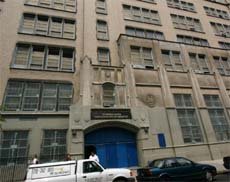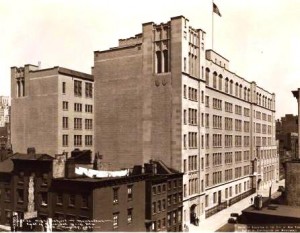My move to the High School for the Humanities (as it was called before the name of Bayard Rustin was attached to it) was a somewhat anxious one after so many years at GW. I’d be leaving behind colleagues I liked and admired with whom I’d worked for seventeen years. How would I fit into the new school? And more interesting still, how would I teach music without being able to read music or play an instrument?
The High School for the Humanities turned out to be a school on steroids. The principal had been selected for this school (after it had gone through a “reorganization” process) because he had developed the idea that one of the problems of the city’s high schools was that no one knew anyone else. Teachers didn’t really know their students, and so the kids were anonymous and free to “act out” without fear of being recognized. Milton Silver’s idea was that if instead of having normal half-yearly semester, we had ten-week cycles, we’d all get to know each other a lot better. For the teachers, it was like being on an assembly line that had suddenly been speeded up. No adjustment was made in the curriculum. Just what had been taught before in 90 days, would now have to be taught in approximately 45 days. Teachers could be found at their desks at 6 AM and 6 PM, grading the flood of completed assignments and drawing up lesson plans. I would find myself speaking faster in my classes just to speed things up, and of course it couldn’t work and it didn’t last.
The school population was more “normal” than it had been at GW, although no test was administered for admission. All students had to do to gain admission was indicate that after graduation they wanted to go to college. We wound up with a population of white students, Asian students, and Afro-Latinos, in equal proportion, and the mix worked. We had a passing rate of 99% on the English Regents test. Of course, the Board of Education, in its relentless search for what worked in education just so they could kill it, did find out about our school, and they immediately set about destroying it by changing the entrance requirements. But that came later, and I left just before the great ship went down.
Teaching music that first semester was somewhat of a “challenge.” The first thing I did was to get one of those truly fantastic curriculum guides published by the Board of Educaiton in the ‘50’s (when there was still some interest in education downtown) and still in circulation. It was a step-by-step vade mecum on the history of American music for a music history and appreciation class. I checked with my class, and yes, there was a student who played the piano, and he was cheerful about helping me. And so, I began my course in a truly patriotic manner with the Star Spangled Banner. Who could object to kids being taught the Star Spangled Banner? The course was notable mostly for what I learned about music that year. I had a good time. The kids enjoyed it. We listened to a lot of hot jazz, and at the end of the course, one of the students confided in me that it was the best music course he’d ever had. I was surprised, somewhat doubtful, but enjoyed the compliment.


